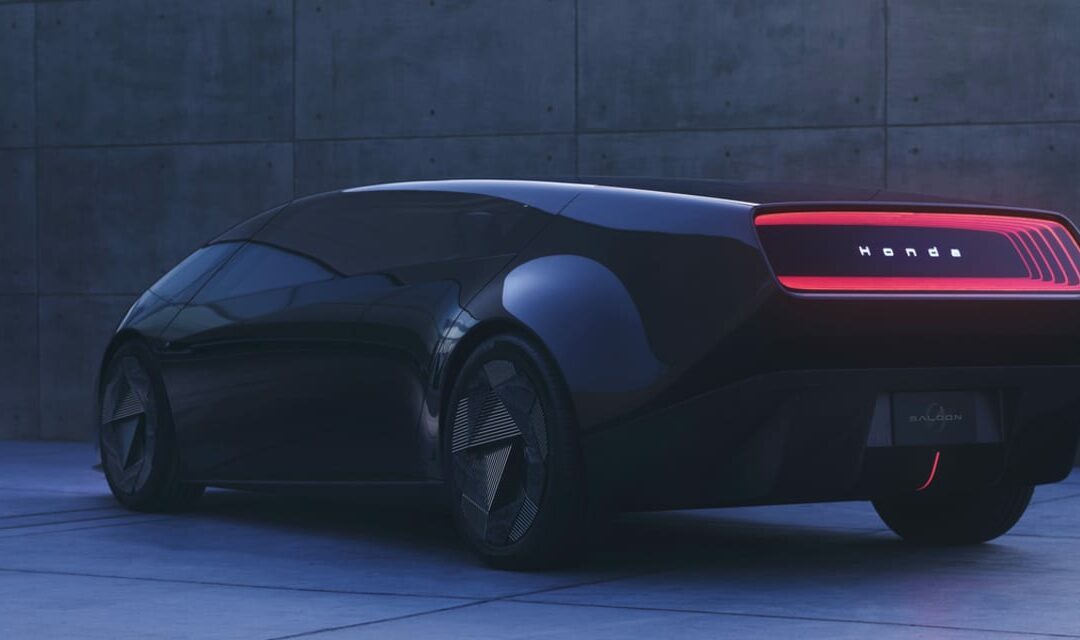Honda thinks today’s electric vehicles are overbuilt. The company dreams of a future of simpler, lighter EVs.
“The mobility we dream of is not an extension of the trend of ‘thick, heavy, but smart’ EVs,” says CEO Toshihiro Mibe.
Instead, Mibe wants “a completely new value from zero based on thin, light, and wise as the foundation for our new Honda 0 EV series to further advance the joy and freedom of mobility to the next level.”
The vision will become solid with a new series of EVs set for a worldwide launch in 2026.
The brand teased the new lineup, the Honda 0 (zero) Series, at last week’s CES in Las Vegas. We can’t help but note Toyota
TM,
calls its electric efforts its “beyond zero” lineup these days, so the rivalry has begun before these even get here.
Also read: CES highlights: AI-equipped robot ball, Sony electric car, Walmart AI checkout and LG transparent LCD TV
Honda’s
HMC,
first U.S.-bound mainstream EV, the Prologue, will reach dealerships later this year. But it uses General Motors
GM,
technology, shared with models like the Chevy Blazer EV and Cadillac Lyriq. Honda is developing the 0 Series entirely in-house.
Check out:The 2024 Honda Prologue: Honda’s new electric SUV is attractive and spacious. When can you get one?
The Honda 0 Saloon
The Honda 0 Saloon looks a little like what you’d get if Lamborghini angrily sketched you a wagon.
Honda
The first is what Honda calls “the Saloon” — a word Europeans use for what Americans call a “sedan.” Honda calls the Saloon “the flagship concept model of the Honda 0 Series.”
Designers aimed to create a “man maximum/machine minimum packaging concept with its low and wide exterior coupled with a surprisingly spacious interior.” A low-slung wedge, we imagine it’s what you’d get if Lamborghini angrily sketched you a wagon.
Honda reveals nothing about its propulsion but says it “debuts advancements of new steer-by-wire and motion control management systems. Leveraging the company’s decades of expertise in robotics, the Saloon features posture control that will assist the driver in a variety of driving situations.”
It looks too wild to sit in a showroom anytime soon. But Honda insists that “a production vehicle based on the Saloon concept is expected to come to the North American market in 2026.”
You might like: 18 new EVs to watch for in 2024
The Honda 0 Space-Hub

The Honda 0 Space-Hub concept
Honda
The other 0 concept looks like what you’d get if Honda designers sketched you a future minivan. If Honda didn’t call it the Space-Hub, we might not think its liftgate looked ready to connect to an airlock. But they do, so we do.
Its smooth, almost featureless, bullet-train-like shape leads back to a windowless rear hatch surrounded by red LEDs.
Honda has almost nothing to say about it, explaining only that it “offers a flexible space that immediately accommodates a variety of passengers and becomes a ‘hub’ that connects people to each other and the outside world.”
Honda does not promise a production vehicle based on the ’Hub.
New logo, high-density batteries

The Honda 0 Space-Hub, and Honda’s new logo.
Honda
Honda announced a new logo specific to its electric efforts to appear on the cars, based on the long-running Honda H. But the new version “symbolizes two outstretched hands,” Honda says. They represent “Honda’s commitment to expand the possibilities of mobility and continue to meet the needs of its customers.”
Without giving much detail, the company teased several new EV technologies. Future 0 series models will include what Honda calls e-Axles, “which will allow for excellent power and efficiency along with lightweight packaging.”
Also see: Hydrogen energy sneaks back into the vehicle conversation at CES 2024
They will also use “a high-density battery that will offer ample range while minimizing battery size.” Honda didn’t disclose anything about the batteries’ chemistry, so we don’t know if this is connected to the brand’s ongoing solid-state battery research. But the company promised “fast-charging from 15% to 80% of battery capacity will be shortened to about 10-15 minutes.”
This story originally ran on KBB.com.









